Do you want to get a unique train tour in China? China Tour Star will make your dream come true. This 7 days China train tour starts from the “city of abundance”-Chengdu to the “roof of the world”-Lhasa. And the train you will take runs on the Qinghai-Tibet railway which is the highest altitude railway in the world. On the way, the diverse natural scenery will feast your eyes. You will see grassland, snow mountains, lakes, wild donkey, yak and so on. I believe that even in the train, you will keep pressing the shutter of your camera. In addition, you will also see the China national treasure-panda in Chengdu and visit several monasteries in Lhasa. Both the natural landscapes and culture sites are waiting for you to explore. Be ready to join this Chengdu to Lhasa train tour right now!

Welcome to Chengdu, the Land of Abundance, and the capital city of Sichuan Province! Your wonderful 7-day classic Chengdu & Lhasa tour will start here.
Today, your tour guide will be holding your name sign and waiting for you at the airport, and then you will be transferred to your hotel. On the way to the hotel, the guide will tell you some interesting stories and useful travel information about Chengdu. Then you will check in at the hotel and have a nice rest.
Chengdu is one of the ten ancient capitals in China and one of the first national famous historical and cultural cities. Located in the hinterland of Chengdu Plain, in the west of Sichuan Basin, and the southwest of China, Chengdu has a flat terrain, rich natural products, and developed agriculture. With a permanent resident population of 16 million, it boasts an important central city in western China, a national important high-tech industrial base as well as a trade and logistics center and a comprehensive transportation hub. The city has a humid subtropical monsoon climate and has been reputed as the “Land of Abundance” since ancient times. It was also the birthplace of the ancient kingdom of Shu (the ancient Sichuan). Besides, it has been the prefectures of various dynasties: in the Han Dynasty (202 BC - 220 AD), Chengdu was one of the five metropolises in China; in the Tang Dynasty (618 - 907), it was one of the most developed industrial and commercial cities in China, ranking the second largest city at that time; in the Northern Song Dynasty (960 - 1127), Chengdu was also the second metropolis outside Bianjing (the capital city of that time) and the world’s first paper money – Jiaozi, was invented and used in Chengdu. With Dujiangyan, Chengdu Research Base of Giant Panda Breeding, and other places of interest, Chengdu is one of the best tourist cities in China.
This morning, after a buffet breakfast at the hotel, we will drive for about 30 minutes for about 10 kilometers to visit the Chengdu Research Base of Giant Panda Breeding from downtown Chengdu. The Chengdu Research Base of Giant Panda Breeding is a world-renowned giant panda ex-situ conservation base, a scientific research and breeding base, a public education base, and an educational tourism base. It covers an area of about 247 acres. And the base is noted worldwide for its protection and breeding of endangered wild animals that are unique to China, especially including giant pandas and red pandas. The base has put up lots of well-distributed buildings and areas for giant pandas, such as the delivery room, feeding area, hospital, scientific research center, and giant panda “luxury” houses that are scattered among the mountain forests, so as to apply landscape imitating natural conditions. Therefore, giant pandas, at different ages, breed and grow here in bliss. Here you will see the Sun Delivery Room and the Moon Delivery Room. Both of them are place for the baby pandas. And the panadas born in the day will be taken care in the Sun Delivery Room while the pandas born at night are in the Moon Delivery Room. When you see the baby panda, you will be surprised to find that the baby panda is not black and white, but gray and white. As the pandas grow up, their gray hair will turn black. This is what the adult panda looks like. From the panda's chubby body, it can be found that they are sleeping lovers. So, if you see a panda playing in a tree, in a pool, or eating, you must press the camera's shutter without hesitation. The panda's favorite food is bamboo. They will grab the bamboo with their front paws, peel off the outer skin of the bamboo with their sharp teeth, and then enjoy a delicious bamboo meal. If you want to get some souvenir here, you can buy the panda dolls from the gift center.
After having lunch, we will take you to Chengdu People’s Park, which is a comprehensive park integrating garden, culture, cultural relic protection, patriotic education, and recreation. The bonsai garden in the People’s Park covers an area of 2,600 square meters, with a corridor and a lotus pond in which water lilies, lotuses, calla lilies, umbrellas, calamus and other aquatic plants are planted. There are more than 200 pots of bonsai on display throughout the year, which makes it the best place for tourists to enjoy flowers and take pictures. In addition, many local people like to enjoy drinking tea, chatting, and playing mahjong here freely and leisurely. You can enjoy the happy “slow life” of the people of Chengdu here. It is much better to have a cup of tea in the tea house in the park, just like the locals do, enjoy the sunshine and be in a daze. The park is free of charge while some extra charge for tea is needed.
Jinli Old Street is a famous commercial street, covering an area of more than 30,000 square meters, with a construction area of more than 14,000 square meters, and it stretches 550 meters long. It contains the culture of the Three Kingdoms (220 - 280) and Chengdu folklore, integrating tourism, shopping, and entertainment. Jinli used to be one of the oldest and most commercial streets in the history of the Kingdom of Shu (221 - 263). On November 18, 2020, Chengdu Wuhou Temple · Jinli was elected as one of the “Ten New Landmarks of Chengdu and Chongqing Cultural Tourism”. Walking on Jinli Street, you will see various shops selling chopsticks, tea, lanterns, silk quilts and souvenirs. In addition, you will see craftsmen making clay figurines, sugar figurines or paper-cutting. The people in the bar who are drinking and chatting in the local dialect are the authentic Chengdu people. If you also want to take a break, it is also a good choice to go in for a drink and chat with the locals.
Optional Activity: You can enjoy a delicious dinner of hot pot at a local restaurant. Sichuan hot pot is mainly spicy and it is delicious, famous at home and abroad. Add the soup you like to the pot and let it boil. Then you can add any ingredients you like into the soup. The most popular ingredient when you eat hot pot is lamb slices. In addition, you can add any ingredients you like, such as tofu, vegetables, mushrooms, fish, meatballs and so on. You can even cook noodles in it. Don’t miss this delicacy.
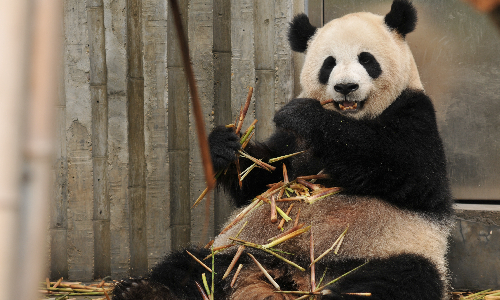
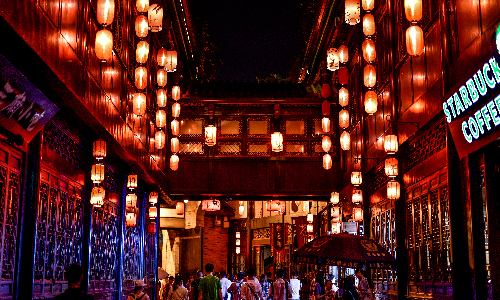
 Lhasa
Lhasa Today, you will first go to visit the famous Dujiangyan Scenic Area. We will drive for about 1 hour and 20 minutes for about 70 km. Located in the west of Chengdu, the Dujiangyan irrigation system is a large water conservancy project built in about 256 BC and has been in use up to now in China. So far, it is the world’s oldest and the only remaining grand water conservancy project, with no dam diversion as the main characteristics. It is known as “the originator of the world water conservancy culture” and a famous tourist attraction in China. For more than 2,000 years, it has played an important role in flood control and irrigation, making Chengdu Plain a “land of abundance” where floods and droughts are away from people’s lives and the local fertile fields. Because of the beautiful scenery and lush trees in the Dujiangyan Scenic Area, it has become a natural summer resort, so many tourists choose to come between April and October. In addition to the natural scenery, there are many historical sites such as Fulong Temple, Lingyan Temple, Anlan Cable Bridge and so on. Legend has it that there was an evil dragon here, and the dragon was confined in Fulong Temple after being subdued.
This afternoon you will visit the Wenshu Temple, which is located in the northwest corner of Chengdu City. It covers an area of more than 200,000 square meters, with all-wooden buildings and looks magnificent. As a national key Buddhist temple China, there are beautiful gardens, stately halls, and numerous cultural relics. There are more than 300 Buddha statues of various sizes in the temple including steel castings, wood carvings, stone carvings, and clay sculptures. There is even a jade Buddha statue from Burma. In addition to Buddha statues, the temple also contains Buddhist relics such as the Indian Bay Leaf Sutra, the Japanese Gilt Sutra of the Tang Dynasty, the Thousand-Buddha robes. The vegetarian food here is also famous. If you want, you can have a taste.
Then you will take the estimated train: Z322 21:37 - 09:56+1 to go to Lhasa. On the train, you will have the opportunity to have close contact with the memorable scenery of Qinghai-Tibet Plateau.
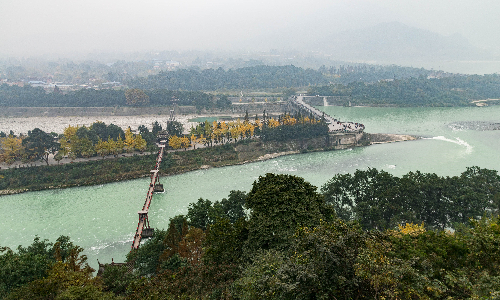
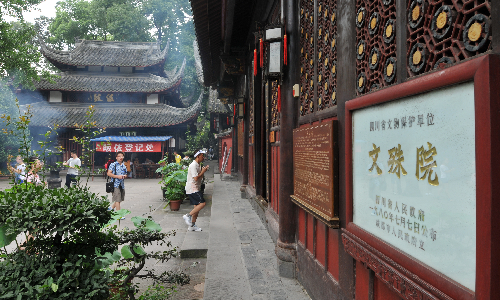
Lhasa, also known as Sunshine City, is located in the southwest of China, the central part of the Qinghai-Tibet Plateau, the northern side of the Himalayas, and the middle valley plain of the Lhasa River. It is the political, economic, cultural, scientific, and educational center of Tibet, as well as a sacred place of Tibetan Buddhism. With an altitude of 3,650 meters, it enjoys a pleasant climate with sunny weather throughout the year and little rainfall, neither severely cold in winter nor extremely hot in summer. The annual sunshine time is more than 3,000 hours. Lhasa is world-famous for its beautiful scenery, long history, unique customs, and strong religious flavor.
Welcome to Lhasa, the capital city of Tibet Autonomous Region of the People’s Republic of China! Your Lhasa guide will meet you at the railway station, and then you will be transferred to your hotel to have a nice rest.
Your guide will take you to have lunch, and then you will visit Norbulingka Park, which is one of the major historical and cultural sites in Tibet. First built in the 1740s, it is a typical Tibetan-style garden where the religious leaders spent the summers. After more than 200 years’ expansion and development, the park currently covers an area of 360,000 square meters. More than 100 different kinds of plants can be discovered in the park, including not only the common flowers and trees in Lhasa but also those rare ones from the Himalayas and other parts of the world. Hence it is called a “Botanical Garden in the Plateau”.
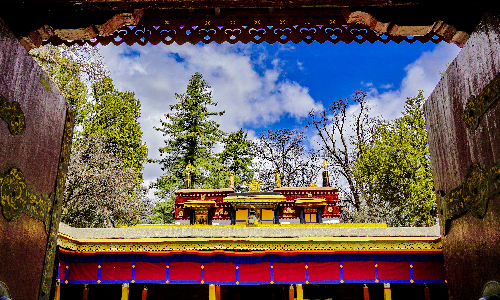
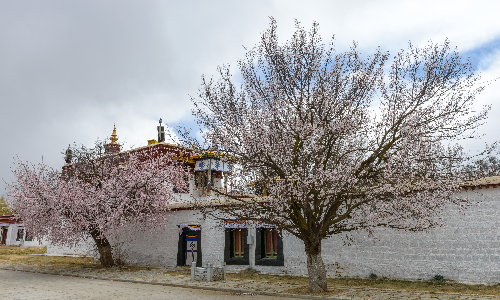
After having breakfast, you will visit the fabulous Potala Palace, which is located in the northwest of Lhasa. It is a palatial building complex. In 1961, the Potala Palace became one of the major historical and cultural sites protected at the national level in China. The palace was listed as a World Cultural Heritage Site in 1994. The main structure of the Potala Palace consists of two parts: the White House and the Red Palace. The whole palace featuring Tibetan style is more than 200 meters high, with the appearance of 13 layers but in fact, only 9 layers inside. Because it was built on the mountainside, with a large area of stone wall, the building seems to be integrated with the hills.
After lunch, you will visit the Jokhang Temple, which is located in the center of Lhasa. It is a Tibetan Buddhist temple built by Songtsan Gambo, the king of Tibet between 629-550. The Jokhang Temple integrates Tibetan, Tang, Nepalese and Indian architectural styles, making it an ancient model of Tibetan religious architecture. With a history of more than 1,300 years, it holds the highest position in Tibetan Buddhism. It is worth mentioning that the 12-year-old Sakyamuni life-size statue is enshrined in the temple. This is a very sacred Buddha statue in the minds of Tibetan Buddhists. In the 7th and 9th centuries, the Jokhang Temple was affected by the Buddhist prohibition movement twice. In order to prevent this Buddha statue from being destroyed, it was buried underground at that time.
Leaving the Jokhang Temple, we will take you to visit Barkhor Street. Located in the old city of Lhasa and with a history of more than 1,300 years, it is a famous circumanbulation and commercial center of Lhasa, which has preserved the traditional appearance and the living mode of the ancient city completely. The original Barkhor Street is only the circumanbulation around the Jokhang Temple, which is considered as the “Holy Road” by Tibetans. Later more and more vendors, pilgrims, and tourists from China other cities, Mongolia, Kashmir, Nepal, Bhutan, India and other countries and regions came to Barkhor Street. So, the street has developed into a shopping street featuring religion, sightseeing, folklore, culture.
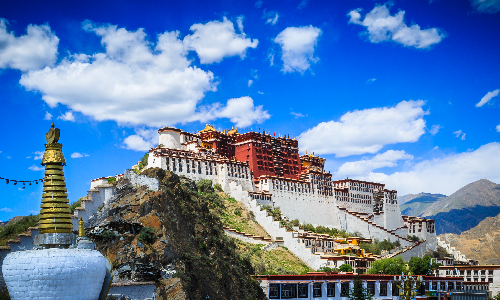
After enjoying your breakfast, we will take you to the the Drepung Monastery. It is located in the western suburb of Lhasa City and was founded in 1416. As the largest temple in Lhasa and even in Tibet, the amount of precious collections in Drepung Monastery is also staggering. Here you can see porcelains of the past dynasties, various thangkas, and you will also see a bronze mirror with a height of 1.29 meters engraved with Manjushri. In addition, various Buddha sculptures are countless here. We believe that you will find lots of amazing things here and have an unforgettable memory.
Then we will visit the Sera Monastery, with its full name of “Sala Mahayana Monastery” that is located in the northern suburb of Lhasa, surrounded by willow forests. Founded in 1419, along with Gandan Monastery and Drepung Monastery, the Sera Monastery is known as one of the three major monasteries in Lhasa. It is the latest one among the three. Since ancient times it has been a place where senior monks and Living Buddhas offered lectures. The Sera Monastery houses tens of thousands of Vajra Buddhas statues, most of which were made locally in Tibet. There are also many bronze Buddhas brought from India and other parts of China. If you are interested in Tibetan Buddhism, these two monasteries are the perfect places to know more about it.
After that, you will visit a local Tibet family. People in Tibet are very hospitable. The host will serve you warm butter tea or invite you to taste authentic highland barley cakes. If you happen to meet the host wearing Tibetan folk costumes, you can learn about Tibetan costume culture with him. But please note that Tibet is mostly followers of Tibetan Buddhism. Please respect the local religious culture. If you want to take a photo with the host, please get their consent first.
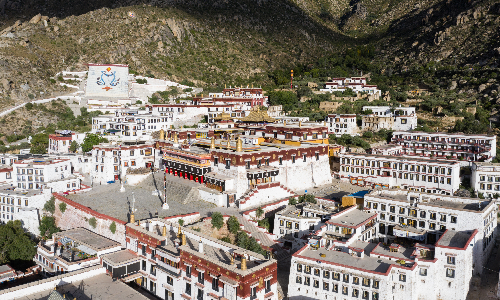
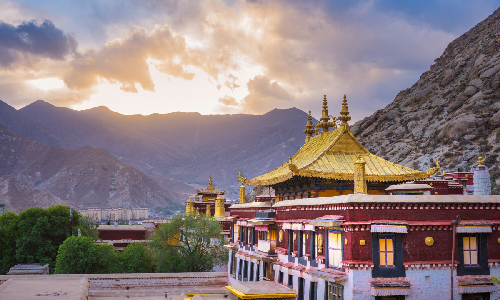
Today is the last day of your wonderful China tour. According to your flight schedule, our guide and driver will pick you up at the hotel and transfer you to the airport. We wish you a pleasant homebound journey.
Editor: Jiao Chen
Proofreader: Betsy He
| City | Five Star hotel list | Four Star hotel list |
|---|---|---|
| Chengdu | Sofitel Chengdu Taihe | Holiday Inn Express Chengdu Jinniu |
| Lhasa | Shangri-La Hotel Lhasa | Thangka hotel |
 |
![]() About your child or infant, please contact us for a discounted price.
About your child or infant, please contact us for a discounted price.



We started with a few days in Beijing & ended in Shanghai, from where we visited the Forbidden City and Great Wall. In between we visited Terra Cotta Warriors Museum, Panda Base, Shanghai Disneyland.

We had a wonderful holiday in China which will remain long in the memory. China is a breathtakingly beautiful country full of splendid temples and palaces, mountains and rivers, peaceful rural scenes and bustling shopping streets.
 QUICK ENQUIRY
QUICK ENQUIRY